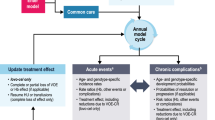Abstract
Donor-specific blood transfusion (DSBT) promotes graft acceptance in certain experimental and clinical situations. However, the exact nature of the operating mechanisms, and in particular the role of Th1/Th2 cytokines, remains controversial. We recently described a fully mismatched rat combination [RA rat (RT1p) to PVG rat (RT1c)] in which a single pre-transplant (Tx) DSBT induces donor-specific tolerance following heart transplantation (Htx). In order to delineate better the role of Th1 and Th2 cytokines in the development of tolerance versus rejection, we studied the intragraft mRNA for Th1 and Th2 cytokines at different time points post-Tx in rejecting and DSBT-tolerized heart grafts. We performed reverse transcriptase–polymerase chain reaction (RT–PCR) to examine intragraft Th1/Th2 cytokines profile. In contrast to findings from previous data, we detected an early (post-Tx day 2) Th1 cytokine upregulation. Th1 downregulation/Th2 immune deviation was observed only at a later period (post-Tx day 30). Consistent with this Th1 early upregulation, a dense mononuclear cellular infiltrate was seen in tolerized grafts, which was equivalent to that seen in rejecting grafts. Despite in vivo unresponsiveness, peripheral lymphocyte derived from tolerant animals proliferated against donor-matched antigens to the same degree as against those of a third party until post-Tx day 30. Altogether, these observations (dense graft cellular infiltrate, early post-Tx Th1 cytokine production, early preserved cellular proliferative responses), suggest that the development of tolerance is preceded by an active Th1 cytokine-mediated immune response. The mechanisms by which an early Th1 response promotes tolerance need to be further studied.





Similar content being viewed by others
References
Babcock GF, Alexander W (1996) The effect of blood transfusion on cytokine production by Th1 and Th2 lymphocytes in the mouse. Transplantation 61:465–468
Bishop GA, McCaughan GW (2001) Immune activation is required for the induction of liver allograft tolerance: implications for immunosuppressive therapy. Liver Transpl 7:161–172
Fabre JW, Morris PJ (1972) The mechanism of specific immunosuppression of renal allograft rejection by donor strain blood. Transplantation 14:634–640
Ganschow R, Broering DC, Nolkemper D, Albani J, Kemper MJ, Rogiers X, Burdelski M (2001) Th2 cytokine profile in infants predisposes to improved graft acceptance after liver transplantation. Transplantation 72:929–934
Hara M, Kingsley CI, Niimi M, Read S, Turvey SE, Bushell AR, Morris PJ, Powrie F, Wood KJ (2001) IL-10 is required for regulatory T cells to mediate tolerance to alloantigens in-vivo. J Immunol 166:3789–3796
Josien R, Pannetier C, Douillard P, Cantarovich D, Menoret S, Bugeon L, Kourilsky P, Soulillou JP, Cuturi MC (1995) Graft-infiltrating T helper cells, CD45RC phenotype, and Th1/Th2-related cytokines in donor-specific transfusion-induced tolerance in adult rats. Transplantation 60:1131–1139
Keown PA, Descamps B (1979) Improved renal allograft survival after blood transfusion: a nonspecific, erythrocyte-mediated immunoregulatory process. Lancet 1:20–22
Koshiba T, Ji P, Waer M, Pirenne J (2001) The technical aspects of combined intestinal and heart transplantation in rats. Transplant Proc 33:532–534
Koshiba T, Van Damme B, Ji P, Lu Y, Sefrioui H, Overbergh L, Tanaka K, Mathieu C, Waer M, Pirenne J (2001) Addition of steroids blocks the tolerogenic potential of donor-specific blood transfusion (DSBT). Transplant Proc 33:375–376
Levy AE, Alexander JW (1996) The significance of timing of additional short-term immunosuppression in the donor-specific transfusion/cyclosporine-treated rat. Transplantation 62:262–266
Ono K, Lindsey ES (1969) Improved technique of heart transplantation in rats. J Thorac Cardiovasc Surg 57:225–229
Onodera K, Hancock WW, Graser E (1997) Type 2 helper T cell-type cytokines and the development of infectious tolerance in rat cardiac allograft recipients. J Immunol 158:1572–1581
Overbergh L, Valckx D, Waer M, Mathieu C (1999) Quantification of murine cytokine mRNAs using real time quantitative reverse transcriptase PCR. Cytokine 11:305–312
Quigley RL, Wood KJ, Morris PJ (1988) Investigation of the mechanism of acute enhancement of renal allograft survival by blood transfusion. Immunology 63:373–381
Salvatierra O, Vincenti F, Amend W, Potter D, Iwaki Y, Opelz G, Terasaki P, Duca R, Cochrum K, Hanes D, Stoney RJ, Feduska NJ (1980) Deliberate donor-specific blood transfusion prior to living related renal transplantation. A new approach. Ann Surg 192:543–552
Sharland A, Shastry S, Wang C, Rokahr K, Sun J, Sheil AGR (1998) Kinetics of intragraft cytokine expression, cellular infiltration and cell death in rejection of renal allografts compared with acceptance of liver allografts in a rat model. Early activation and apoptosis is associated with liver graft acceptance. Transplantation 65:1370–1377
Singal DP, Joseph S (1982) Role of blood transfusions on the induction of antibodies against recognition sites of T lymphocytes in renal transplant patients. Hum Immunol 4:93–108
Smith MD, Hardy G, William JD, Coles GA (1983) Suppressor cell numbers and activity in non-transfused renal dialysis patients. Clin Nephrol 20:130–135
Yan Y, Shastry S, Richards C, Wang C, Bowen DG, Sharland AF, Painter DM, McCaughan GW, Bishop GA (2001) Posttransplant administration of donor leukocytes induces long-term acceptance of kidney or liver transplants by an activation-associated immune mechanism. J Immunol 166:5258–5264
Zhai Y, Ghobrail RM, Busuttil RW, Kupiec-Weglinski JW (1999) Th1 and Th2 cytokines in organ transplantation: paradigm lost? Crit Rev Immunol 19:155–172
Zhai Y, Kupiec-Weglinski JW (1999) What is the role of regulatory T cells in transplantation tolerance? Curr Opin Immunol 11:497–500
Zhai Y, Li J, Hammer M, Busuttil RW, Volk HD, Kupiec-Weglinski JW (2001) Evidence of T cell clonality in the infectious tolerance pathway: implications toward identification of regulatory T cells. Transplantation 71:1701–1708
Author information
Authors and Affiliations
Corresponding author
Additional information
Part of this work was presented at the 10th Congress of the European Society for Organ Transplantation, 6–8 October 2001, Lisbon, Portugal
About this article
Cite this article
Koshiba, T., Giulietti, A., Van Damme, B. et al. Paradoxical early upregulation of intragraft Th1 cytokines is associated with graft acceptance following donor-specific blood transfusion. Transpl Int 16, 179–185 (2003). https://doi.org/10.1007/s00147-002-0515-9
Received:
Revised:
Accepted:
Published:
Issue Date:
DOI: https://doi.org/10.1007/s00147-002-0515-9




